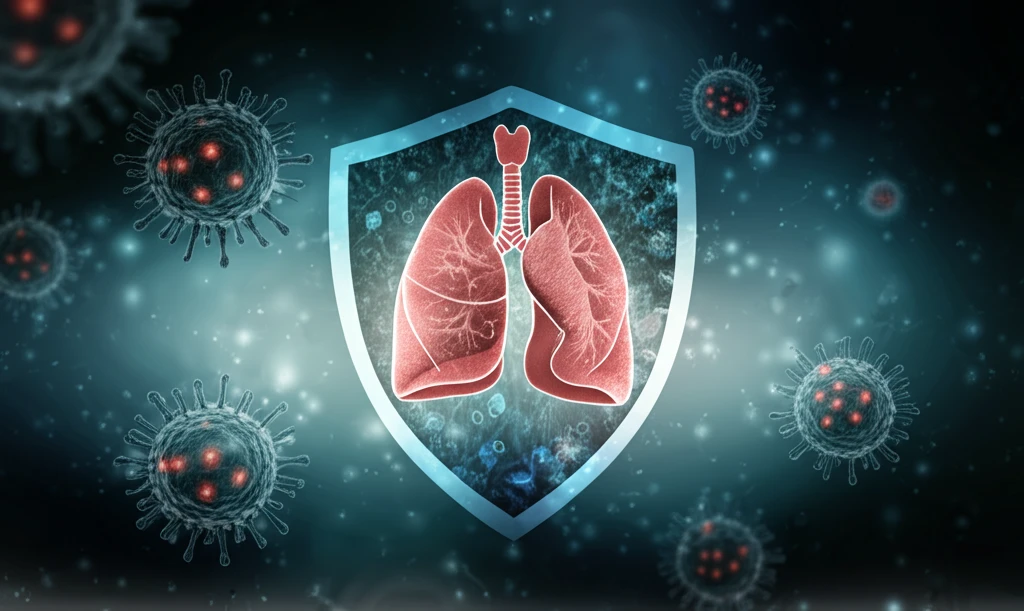
Unlocking Lung Health: How CRTH2 Research Could Revolutionize Respiratory Treatments
"New Research Reveals the Unexpected Role of CRTH2 in Pulmonary Inflammation and Fibrosis, Offering Potential for Innovative Therapies"
Lung diseases, particularly those classified as diffuse parenchymal lung diseases (DPLDs), present a significant challenge to global health. Often referred to as interstitial pneumonia, DPLDs encompass a range of disorders characterized by inflammation and fibrosis—or scarring—of the lung tissue. While some conditions respond to anti-inflammatory treatments like glucocorticoids, others, such as idiopathic pulmonary fibrosis (IPF), do not. This is because IPF involves an inappropriate repair response following lung injury, occurring even in the absence of active inflammation.
Current treatments for IPF, including anti-fibrotic agents like pirfenidone and nintedanib, offer limited effectiveness, underscoring the urgent need for innovative therapeutic strategies. Researchers are actively exploring the complex interplay of chemokines, cytokines, growth factors, and cellular factors that contribute to lung fibrosis. Among these, type 2 cytokines like interleukin (IL-)4, -5, and -13 have garnered significant attention due to their elevated presence in IPF patients.
A recent study sheds new light on the role of CRTH2, a receptor for prostaglandin D2, in the context of bleomycin-induced pulmonary inflammation and fibrosis. The findings challenge previous assumptions and open new avenues for therapeutic intervention. This article delves into the key findings of this study, exploring the implications for future treatments.
What is CRTH2 and Why Does It Matter for Lung Health?

CRTH2, or chemoattractant receptor homologous with Th2 cells, is a receptor that responds to prostaglandin D2, a lipid mediator involved in inflammatory processes. Primarily found on Th2 lymphocytes, group 2 innate lymphoid cells, eosinophils, and basophils, CRTH2 influences the production of type 2 cytokines, including IL-13, a known contributor to fibrosis. Because of this association, scientists initially believed that inhibiting CRTH2 might protect against fibrotic lung diseases.
- Higher mortality rates after bleomycin treatment.
- Increased accumulation of inflammatory cells in the lungs.
- Reduced pulmonary compliance.
- Elevated levels of collagen and total protein in the lungs (indicators of fibrosis).
- Decreased levels of interferon γ, IL-6, IL-10, and IL-17A in bronchoalveolar lavage fluid (BALF).
The Future of CRTH2 Research in Lung Disease
While the study's findings are unexpected, they underscore the complex nature of lung diseases and highlight the potential of CRTH2 as a therapeutic target. Further research is needed to fully elucidate the mechanisms by which CRTH2 exerts its protective effects, potentially leading to the development of novel treatments for pulmonary inflammation and fibrosis. These advances are particularly relevant for conditions like IPF, where current therapeutic options remain limited.
